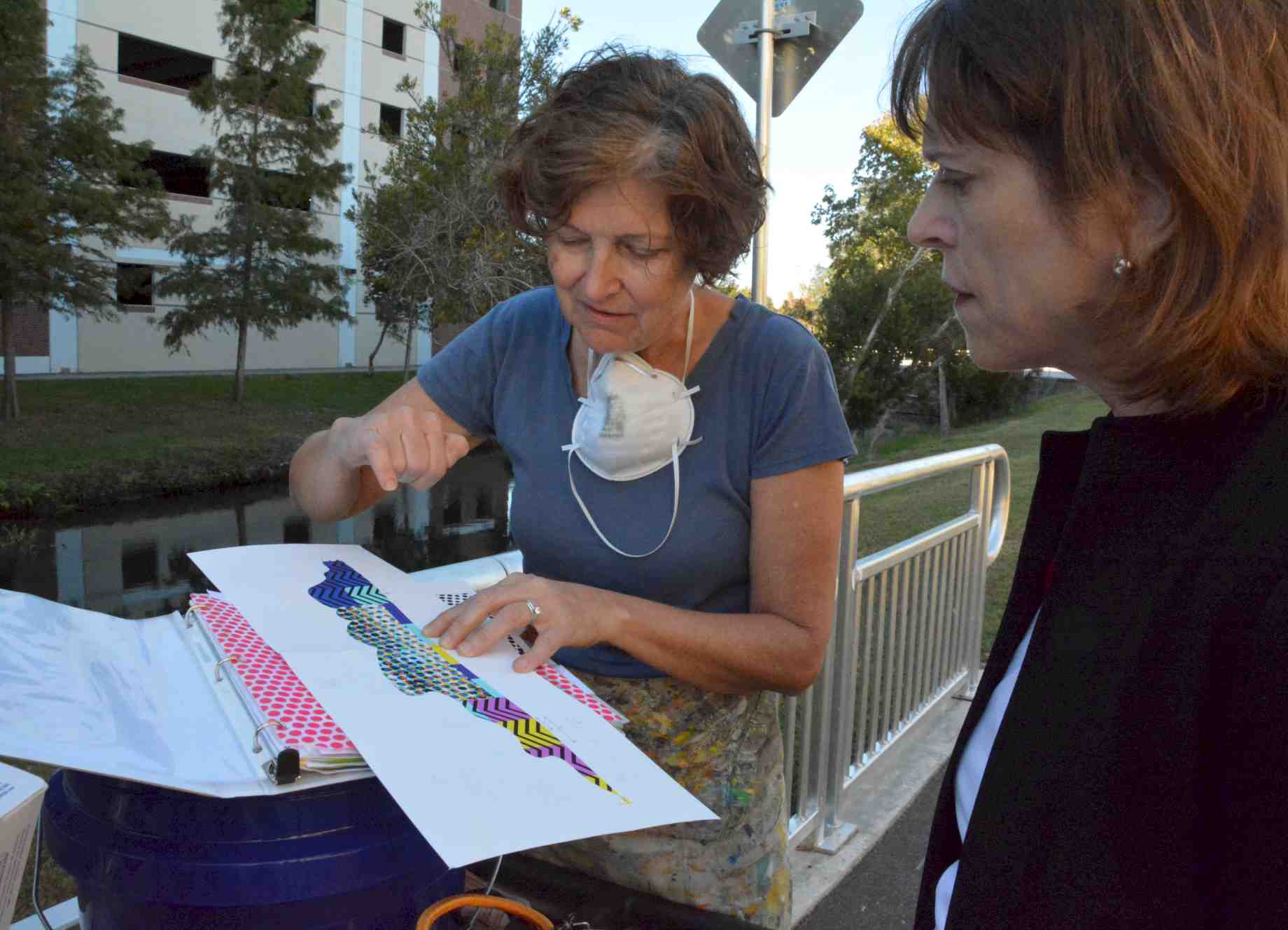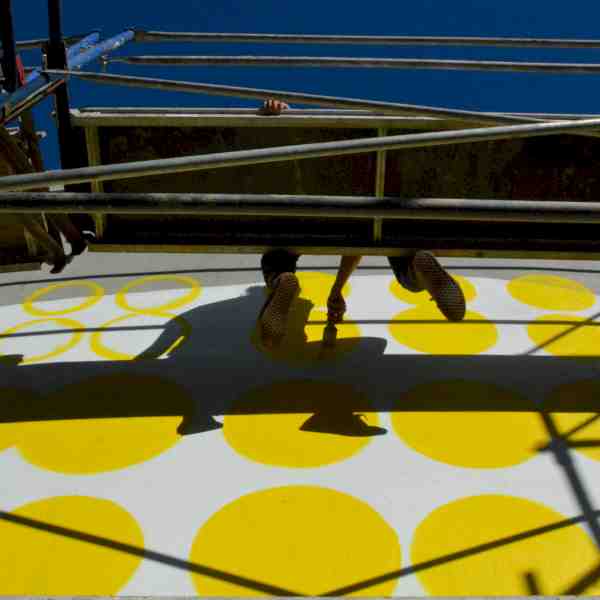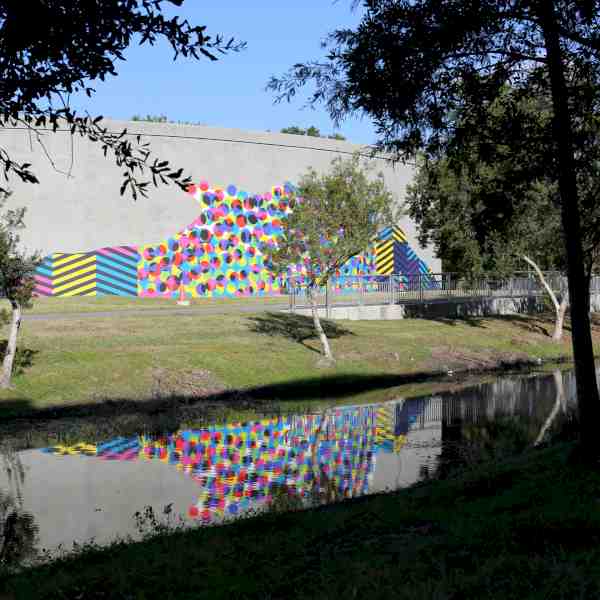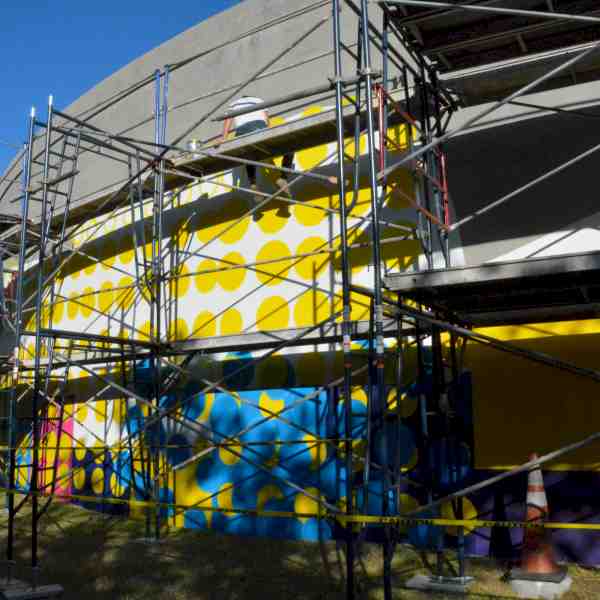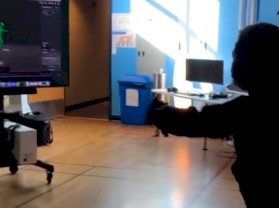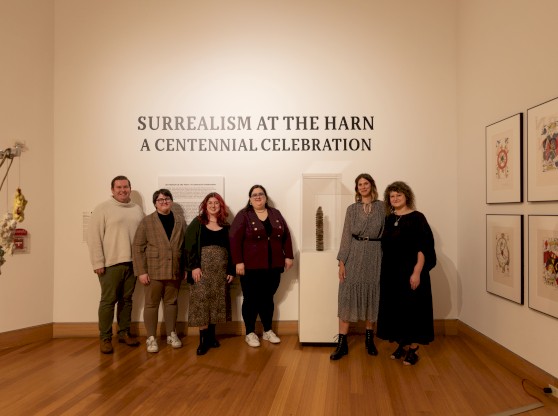The University of Florida’s water reclamation tank lies on Gale Lemerand Road, across from the Commuter Lot and in front of the Digital Design Wetlands.
For passersby, it is nothing more than a giant concrete slab on one of campus’s busier roads. But for Julia Morrisroe, a College of the Arts (COTA) associate professor of drawing and painting, it is the perfect canvas.
“We’re kind of in the midst of nature, science and that intersection,” she said. “And this tank has always just been this great, big cement wall, which is actually a perfect place to put a mural.”
Now, after eight months of planning and weeks of arduous physical labor, part one of the mural, Currents of Data, is complete. What was once a gray concrete slab is decorated with shapes of cyan, bright yellow, green and magenta drawn from images of Florida’s Blue Springs blown up into pixelated bits.
She said those bits reflect data and how it is used to drive policy decisions on campus.
Morrisroe, an experienced muralist, states that her idea for the mural stemmed from her work with the City of Gainesville’s 352Walls project where she was a member of the Curatorial Board. There, she started a series of master classes where UF students and community members could learn more about mural techniques.
“My goal as a member of the COTA faculty and 352Walls is to build a muralist movement in Gainesville, establish UF’s role in this movement and as we move forward develop a Mural Art Symposium that will bring together international artists, curators and communities to build this movement forward,” she noted in her proposal.
She believes that murals, as a form of public art, are important as sources of pleasure and pride for community members. This was especially true for this project.
“Faculty, staff, visitors and students who walk this path daily would stop because they were curious about what we were doing. Others would mention as they were walking by how much they loved the mural,” she said. “It felt great to receive such an immediate positive reception to our efforts. Murals can shift our perception of our environment and help us build the community that embodies the best of what we have to offer.”
Morrisroe has dedicated her life to growing this joy—both by spreading it through her community and passing it onto younger people.
For art students, she believes mural painting is particularly valuable because they get to see the red tape. They get to walk through the process of negotiation for a location, working with stakeholders, proposal development, funding, budget development and management, finding and hiring contractors, purchasing supplies, orchestrating the workflow and supervising the teams needed to make a mural, she said.
Of course, learning the execution process is equally important. Currents of Data was more of an old-school process.
A data projector is a simple tool that can be used to scale up a drawing quickly, but trees blocked the view on the water tank, forcing the team to manually scale the project.
“We ended up using chalk lines and templates to construct the design,” Morrisroe said. “ This manual process added two days to the project timeline.”
Adapting to unpredictable circumstances is an important skill for all artists, but public artists especially. Creative thinking not only helps determine what to make. It also helps determine how to make it.
One example of how Morrisroe emphasizes creative process to her students is a mural painting technique she developed using a leaf blower to paint and mix colors.
“My students had a design for a mural that required them to cover the wall with a mixture of blues to reference the ocean,” she recalled.
They wondered what the most effective way to cover the wall with a range of blues would be. One student suggested they would have to push the paint around like a fan or hair dryer might. She said it might have to be something a little bigger—like a leaf blower.
“After some laughter we decided to give it a try,” she said. “With trial and error, we found it required three people. One student dipped large brushes in two or three different blue paints and generously slapped the paint onto the wall. The second student spray misted the paint, to keep the paint fluid, while the student running the leaf blower angled the forced wind to push the paint across the wall and to create the color mixing. It was a great success and we were able to create the base coat of the mural in a day.”
Part two of this mural project is tentatively titled Data Waterfalls. Her original plans for the mural have changed based on the visual impact of Currents of Data. Instead of surging like a wave, Morrisroe said she wants the mural to cascade like a waterfall.
She plans to paint Data Waterfalls next fall.
To see more, watch this video.
